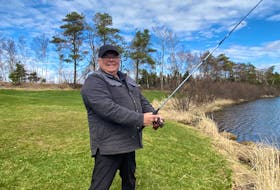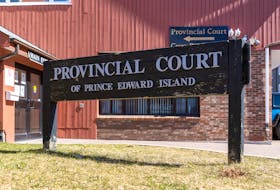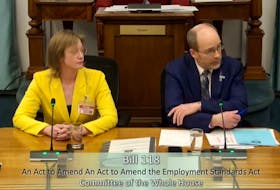The Atlantic bubble is open as of Friday — meaning Atlantic Canadians can travel freely without quarantine in the four provinces — and many in the region are making plans to see family or just take in a change of scenery.
Both Nova Scotia and Newfoundland and Labrador have confirmed they are considering opening up travel to their provinces from the rest of Canada later this month.
But with seat distancing protocols being relaxed on Canada’s two largest airlines, WestJet and Air Canada, as of Wednesday, allowing for the sale of adjacent seats, some are wondering what risk allowing air travellers to move freely around the region without a two-week isolation period could mean for COVID-19 cases, especially since the coronavirus can be transmitted by asymptomatic carriers.
Warnings were issued for possible exposure to the coronavirus on three flights to Vancouver on Wednesday, including two Air Canada flights, as well as a WestJet flight from Toronto to Halifax on June 26.
And after three weeks of no new cases, Nova Scotia has reported three new infections in as many days, all related to travel. The most recent case was reported Thursday in a temporary foreign worker who came to the province from Mexico. All were under self-isolation orders when the cases were detected, as remains required for travellers coming from anywhere outside of Atlantic Canada.

Newfoundland and Labrador Health Minister Dr. John Haggie said obviously anything that reduces physical distancing tends to increase transmission risk.
“There's certainly discussion about what the significance of selling the middle seats will be. … (It) is a concern to us,” he said.
“One of the offsets of that, and one I’m sure the aviation world will argue, is that there hasn't been a significant number of cases, if any, that can be attributed to acquiring the virus actually on a flight within Canada.”
Mask-wearing, where physical distancing is not possible, has been proven to reduce the spread of the coronavirus by stopping the spread of droplets from a sick person, and all major airlines in Canada currently have mandatory mask-wearing as part of their protocols.
Moreover, there are already significant screening protocols in place that prevent symptomatic individuals from getting on a flight to or within Canada, and by the end of September temperature screening will be instituted in Canada’s 15 largest airports, including Halifax and St. John’s, and checks will be required as part of the departure procedure for domestic, transporter and international flights.
Border closures announced in March are still in effect, and only those who are Canadian citizens, permanent residents, immediate family members of those two categories or essential workers can enter Canada by air.
Even so, Nova Scotia Premier Stephen McNeil acknowledged Tuesday that opening up to travel will create some challenges, but the question of how those challenges are dealt with will be determined by how well other protocols are followed — things like physical distancing, mask-wearing, staying home if sick and public-health efforts such as contact tracing, as well as self-isolation for anyone who is coming from outside the Atlantic bubble.
“While there's a risk associated with travel, it’s minimal in Atlantic Canada and this is a great first step for us to open up our region to allow movement of our own citizens, family reunification inside of the region and allowing economic opportunity to happen as we continue to be vigilant with COVID,” McNeil said.
“How do we ensure that we continue to protect the health and safety of Nova Scotians as we open up economically, because we now also have to look at the economic health of citizens of our province as well.”
In separate interviews, both Haggie and McNeil said plans to open up travel to the rest of Canada without isolation are not set in stone and would be made based on science and with the current epidemiology in mind.
Haggie said travel within the Atlantic bubble could also be scaled back at any time if the situation warrants it, but all the decisions that have been made up to this point about reopening in Newfoundland have been made with careful consideration and none have needed to be retracted.
“The idea of the Atlantic bubble as a step is based on the concept of similar epidemiology in each of the provinces. I understand the concerns, but life has to try and return to whatever the new normal looks like, and from our point of view this was a reasonable and safe next step,” he said.
Haggie said all signs point to the fact that COVID-19 will be around for some time, and for now it's all about risk management.
“Everything you do has some degree of COVID-related risk, what you do is try and reduce that,” he said.
“One of the challenges for COVID-19 is it is a novel virus and there is a huge element of uncertainty for a lot of the decisions we make, … but this was always about getting back to life, it wasn’t about hiding until the world changed and COVID vanished.”









